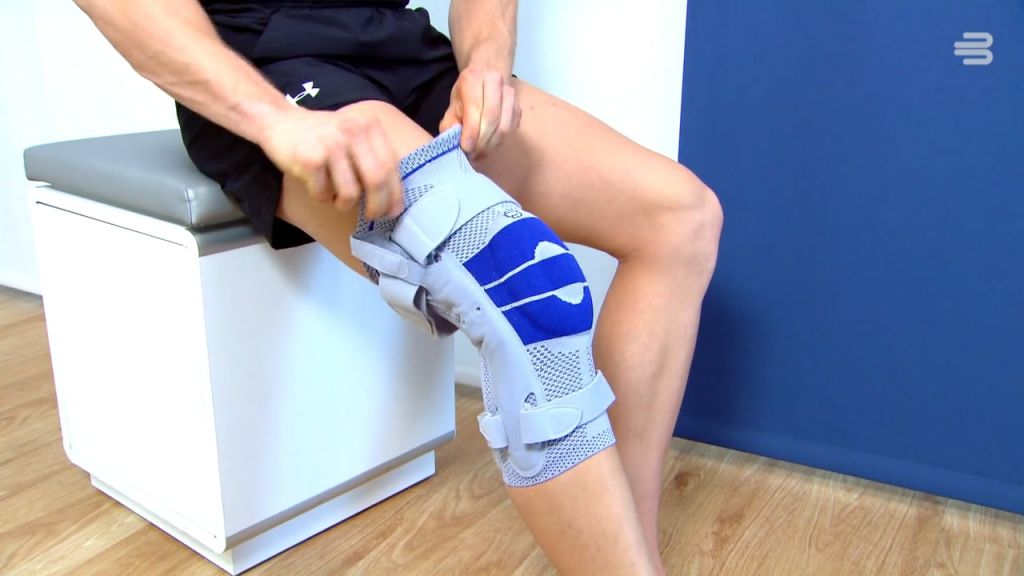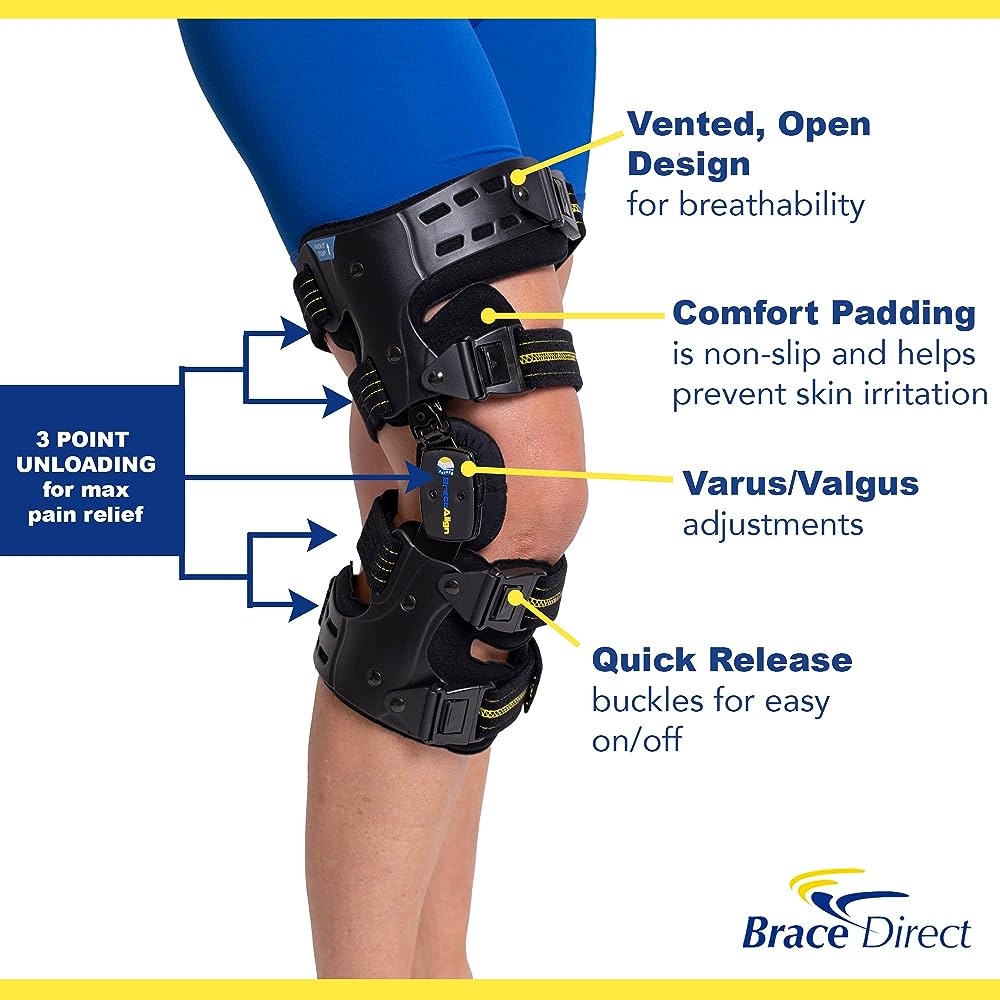In this article, you will learn all about knee braces and how they can bring you a pain-free life. We will discuss the various types of knee braces available and their benefits. Additionally, you will find information on when and how to wear knee braces for optimal results. By the end of this article, you will have a comprehensive understanding of knee braces and their role in providing relief from knee pain.
What are Knee Braces?
Knee braces are orthopedic devices that are specifically designed to provide support and stability to the knee joint. They are commonly used by individuals who suffer from knee injuries, arthritis, or other knee-related conditions. These braces are typically made of a combination of rigid materials, such as metal and plastic, and soft materials, such as fabric and foam padding.
Types of Knee Braces
There are several types of knee braces available on the market, each designed to address different knee conditions and provide varying levels of support. The main types of knee braces include:
-
Prophylactic Knee Braces: These braces are commonly used by athletes to prevent knee injuries, particularly in contact sports. They are lightweight and provide support to the knee joint, helping to reduce the risk of sprains and strains.
-
Functional Knee Braces: These braces are often prescribed to individuals who have already suffered a knee injury, such as a ligament tear or post-surgical conditions. Functional knee braces provide support to the knee joint during movement and help to stabilize the knee.
-
Unloader Knee Braces: These braces are specifically designed to relieve pressure and reduce pain in individuals with knee osteoarthritis or other degenerative conditions. They work by shifting the load away from the affected side of the knee joint, redistributing it to the healthier areas.
-
Hinged Knee Braces: Hinged knee braces are commonly used for individuals who require significant support to stabilize their knee joint. They feature metal hinges on the sides, allowing controlled movement while providing stability and limiting excessive motion.
Purpose of Knee Braces
The primary purpose of knee braces is to provide support and stability to the knee joint. They can help to alleviate pain, reduce discomfort, and improve overall knee function. Whether for preventive measures or rehabilitative purposes, knee braces play a crucial role in minimizing the risk of further injuries and promoting healing.
How Knee Braces Work
Knee braces work by exerting gentle pressure on the knee joint, providing additional support and stability. This pressure helps to distribute the forces across the knee more evenly, reducing the strain on the ligaments, tendons, and cartilage. By limiting excessive movement and properly aligning the knee, braces can help to reduce pain and discomfort, improve mobility, and prevent further damage to the knee joint.
Benefits of Wearing Knee Braces
Wearing knee braces can offer a range of benefits for individuals with knee conditions or injuries. Here are some of the key advantages:
Reduced Pain and Discomfort
Knee braces are highly effective in reducing pain and discomfort associated with various knee conditions. Whether it’s due to arthritis, ligament sprains, or post-surgical recovery, the added support provided by a knee brace can help to alleviate pain, allowing individuals to engage in daily activities with greater ease.
Improved Stability
One of the primary benefits of knee braces is the improved stability they offer to the knee joint. Whether an individual has an unstable knee due to a previous injury or a degenerative condition, a knee brace can provide the necessary support to prevent excessive movement and help maintain proper alignment.
Prevention of Further Injuries
Knee braces are widely used for preventive measures, especially in sports activities. Athletes participating in high-impact sports often wear knee braces to reduce the risk of knee injuries, such as ligament tears or dislocations. Knee braces provide an additional layer of protection and stability, reducing the chances of further damage to the knee joint.
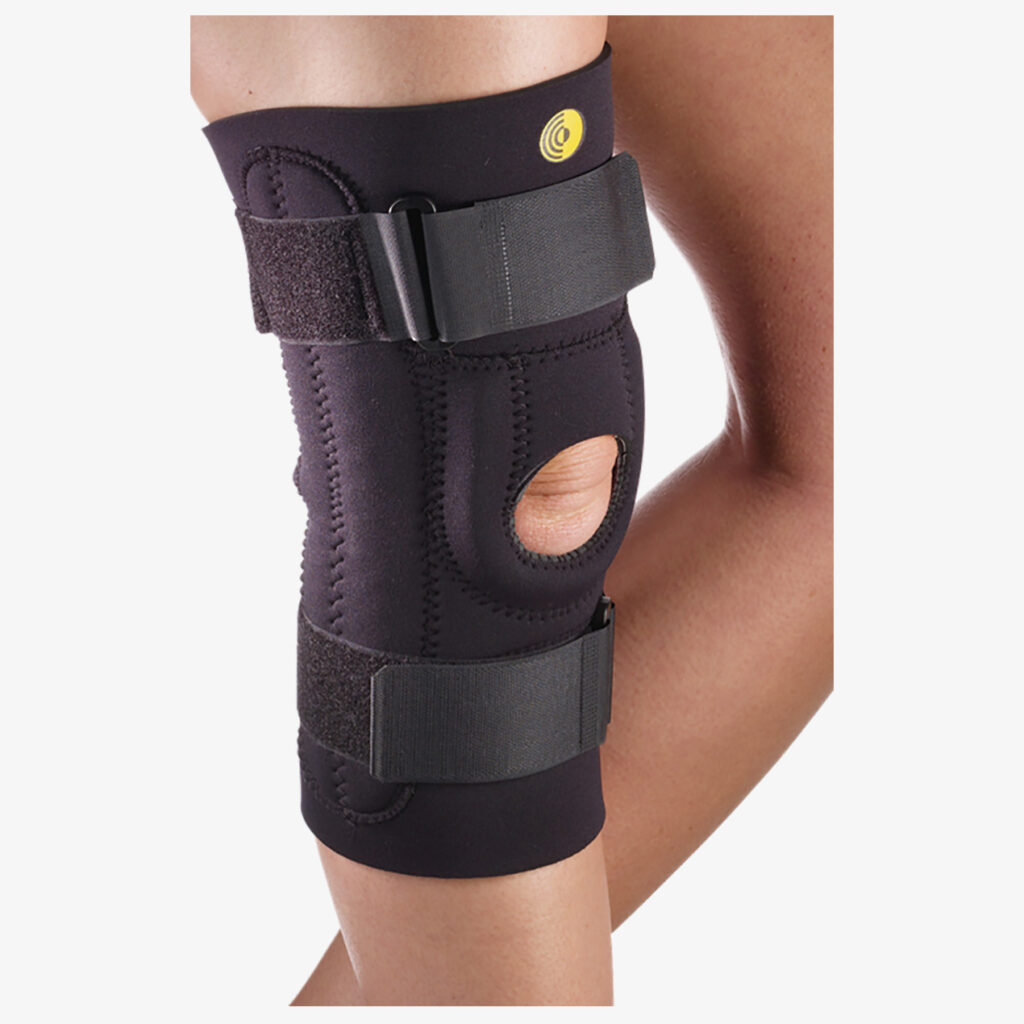
Choosing the Right Knee Brace
When choosing a knee brace, it is essential to consider several factors to ensure the proper fit and support. The following considerations can help guide your decision:
Considerations for Size and Fit
Proper sizing is crucial when selecting a knee brace. It’s essential to measure the circumference of your thigh and calf to ensure the correct fit. Most knee braces come with adjustable straps and closures, allowing for a customizable fit tailored to your specific needs.
Different Knee Conditions and Corresponding Brace Types
Different knee conditions may require specific types of braces for optimal support. Consulting with a healthcare professional, such as a doctor or orthopedic specialist, can help determine the most suitable brace for your condition. They can assess your knee stability, range of motion, and specific requirements to guide you towards the appropriate brace.
Consulting with a Healthcare Professional
If you are uncertain about which knee brace to choose, it is always recommended to consult with a healthcare professional. They can provide personalized advice based on your individual needs and medical history. Their expertise will ensure that you select the right brace for your condition.
Using Knee Braces for Rehabilitation
Knee braces play a crucial role in the rehabilitation process following a knee injury or surgery. They can aid in the recovery and promote optimal healing. Here are some ways knee braces are commonly used in rehabilitation:
Post-surgery Rehabilitation
After knee surgery, such as ligament reconstruction or knee replacement, knee braces are often utilized as part of the rehabilitation process. These braces can provide support and stability to the healing knee, helping to protect the surgical site and prevent excessive movement during recovery.
Knee Brace Exercises
In addition to wearing a knee brace, performing knee brace exercises can aid in the rehabilitation process. These exercises are specifically designed to strengthen the muscles around the knee, improve stability, and enhance overall knee function. They should be performed under the guidance of a healthcare professional or physical therapist.
Duration and Frequency of Use
The duration and frequency of knee brace usage can vary depending on the specific injury or condition. It is essential to follow the recommendations of your healthcare professional or orthopedic specialist regarding when and how long to wear the brace. Overusing or prematurely discontinuing the use of a knee brace can hinder the rehabilitation process and may lead to further complications.
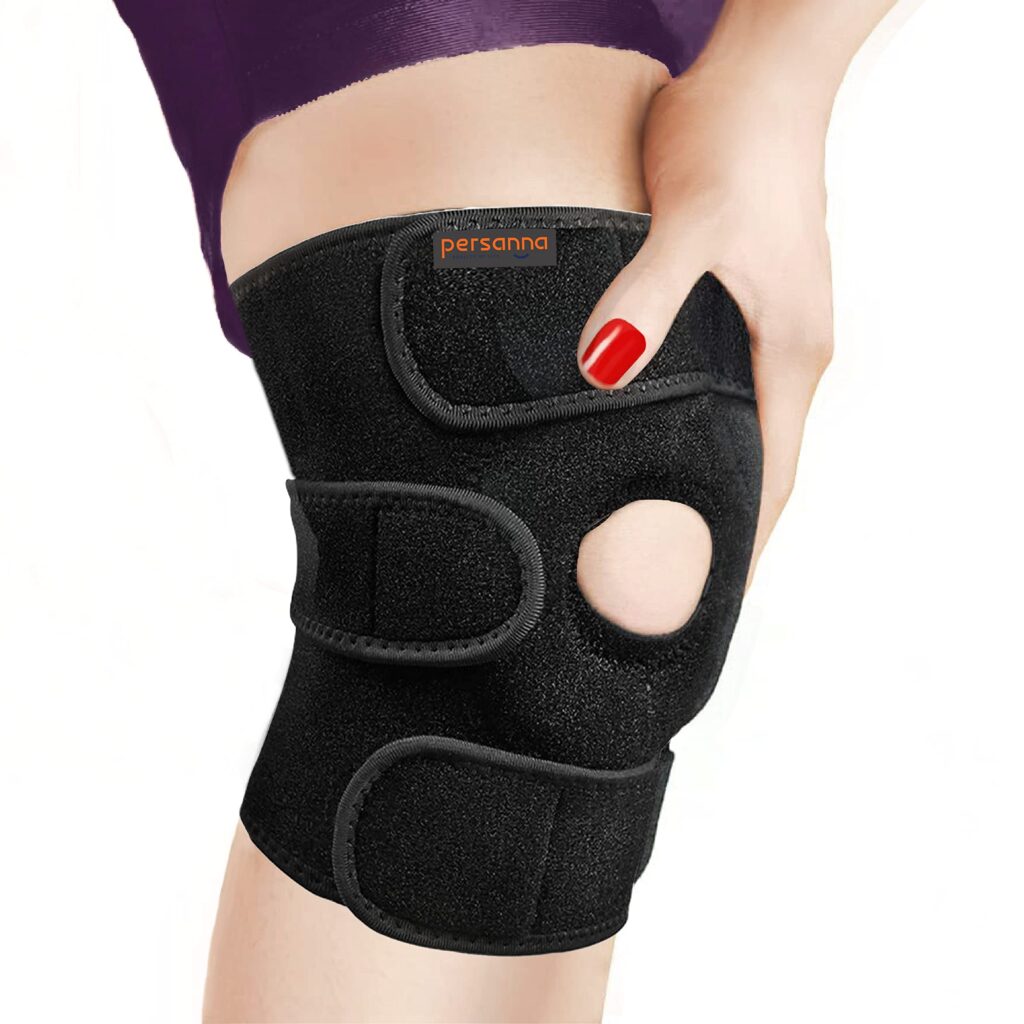
Common Types of Knee Braces
There are various types of knee braces available to address specific knee conditions and provide the desired support. Some common types of knee braces include:
Hinged Knee Braces
Hinged knee braces are often recommended for individuals who require significant support to stabilize their knee joint. These braces feature metal hinges on the sides, allowing controlled movement while providing stability and limiting excessive motion. Hinged knee braces are commonly used for ligament injuries, such as ACL or MCL tears.
Unloader Knee Braces
Unloader knee braces are specifically designed to relieve pressure and reduce pain in individuals with knee osteoarthritis or other degenerative conditions. They work by shifting the load away from the affected side of the knee joint, redistributing it to the healthier areas. Unloader knee braces can provide significant pain relief and improved mobility for those with arthritis-related knee pain.
Prophylactic Knee Braces
Prophylactic knee braces are primarily used by athletes to prevent knee injuries, particularly in contact sports. These braces are lightweight and provide support to the knee joint, helping to reduce the risk of sprains and strains. Prophylactic knee braces can also offer additional protection during high-intensity activities, providing athletes with peace of mind when it comes to knee stability.
Caring for and Maintaining Knee Braces
Proper care and maintenance of knee braces are essential to ensure their longevity and effectiveness. Here are some tips for caring for your knee brace:
Cleaning and Washing Instructions
Regular cleaning is necessary to keep your knee brace free from dirt, sweat, and odor. Most knee braces are hand washable using mild soap and water. It is essential to follow the manufacturer’s instructions for cleaning and drying to prevent any damage or deterioration to the brace’s materials.
Storage Tips
Proper storage is crucial to maintain the integrity and effectiveness of your knee brace. It is recommended to store your brace in a clean, dry location, away from direct sunlight and excessive heat. Storing it flat or hanging it to maintain its shape can help prevent any deformities or warping.
Replacing and Repairing
Over time, knee braces may undergo wear and tear due to regular use. It is important to inspect your brace regularly for any signs of damage, such as frayed straps or worn-out hinges. If you notice any significant damage, it is advisable to consult with a healthcare professional or the manufacturer for repair or replacement options.
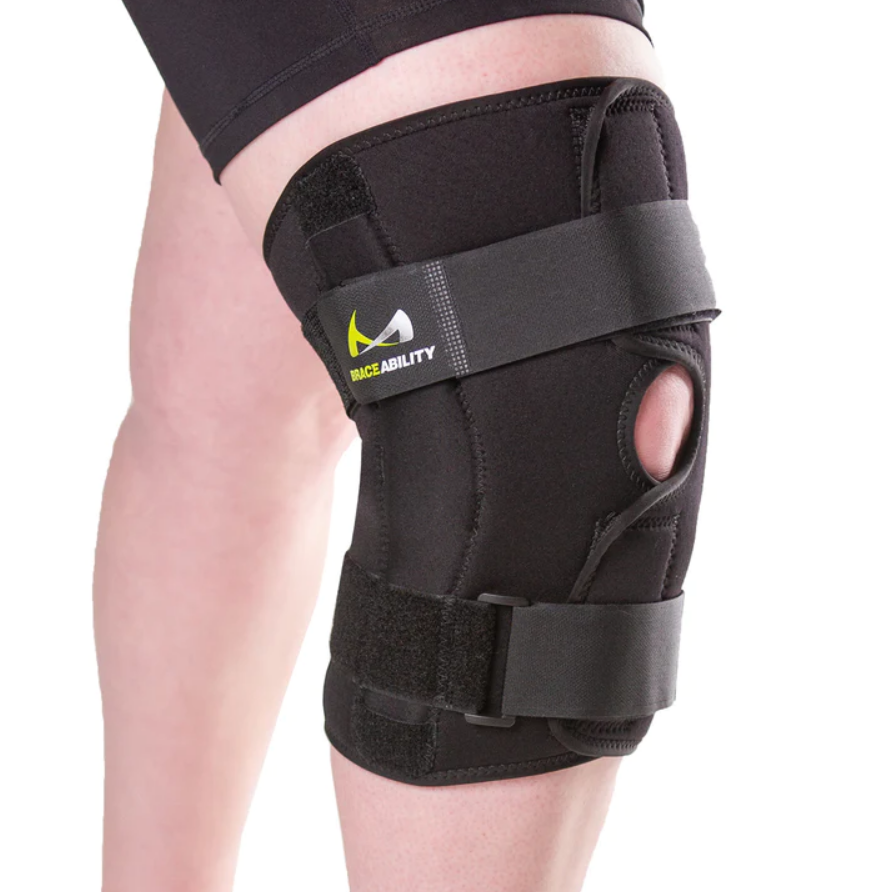
Possible Side Effects of Wearing Knee Braces
While knee braces are generally safe and effective, some individuals may experience side effects or complications. It is important to be aware of the potential risks associated with wearing knee braces, including:
Skin Irritation
Some individuals may develop skin irritation or allergies from wearing knee braces. This can be caused by friction, pressure points, or contact with materials that the individual may be sensitive to. If you experience any skin irritation or discomfort, it is advisable to discontinue use and consult with a healthcare professional for alternative solutions.
Restricted Blood Flow
Wearing a knee brace that is too tight or wearing it for prolonged periods can potentially restrict blood flow to the lower leg. This can lead to numbness, tingling, or swelling. It is important to ensure the brace is properly fitted and to follow the recommended usage guidelines to prevent any circulation issues.
Muscle Weakness
Regular and prolonged use of knee braces can potentially lead to muscle weakness. If the muscles around the knee joint rely too heavily on the brace for support, they may become weaker over time. It is important to balance the use of a knee brace with appropriate exercises and physical therapy to maintain muscle strength and prevent dependency on the brace.
Alternatives to Knee Braces
While knee braces can be highly beneficial, they may not be suitable for everyone or every situation. Here are some alternatives to consider:
Physical Therapy
Physical therapy can be an effective alternative or complementary treatment to knee braces. A physical therapist can provide targeted exercises and therapies to strengthen the muscles around the knee joint, improve stability, and reduce pain. Physical therapy can be particularly beneficial for individuals recovering from knee injuries or surgeries.
Strength Training
Strengthening the muscles around the knee through targeted strength training exercises can provide additional support and stability. Building muscle strength can help reduce the risk of knee injuries and provide improved joint functionality.
Joint Supplements
Certain supplements, such as glucosamine and chondroitin sulfate, are believed to promote joint health and reduce pain associated with knee conditions, such as osteoarthritis. While the effectiveness of these supplements may vary, some individuals find relief from knee pain when incorporating them into their daily routine.
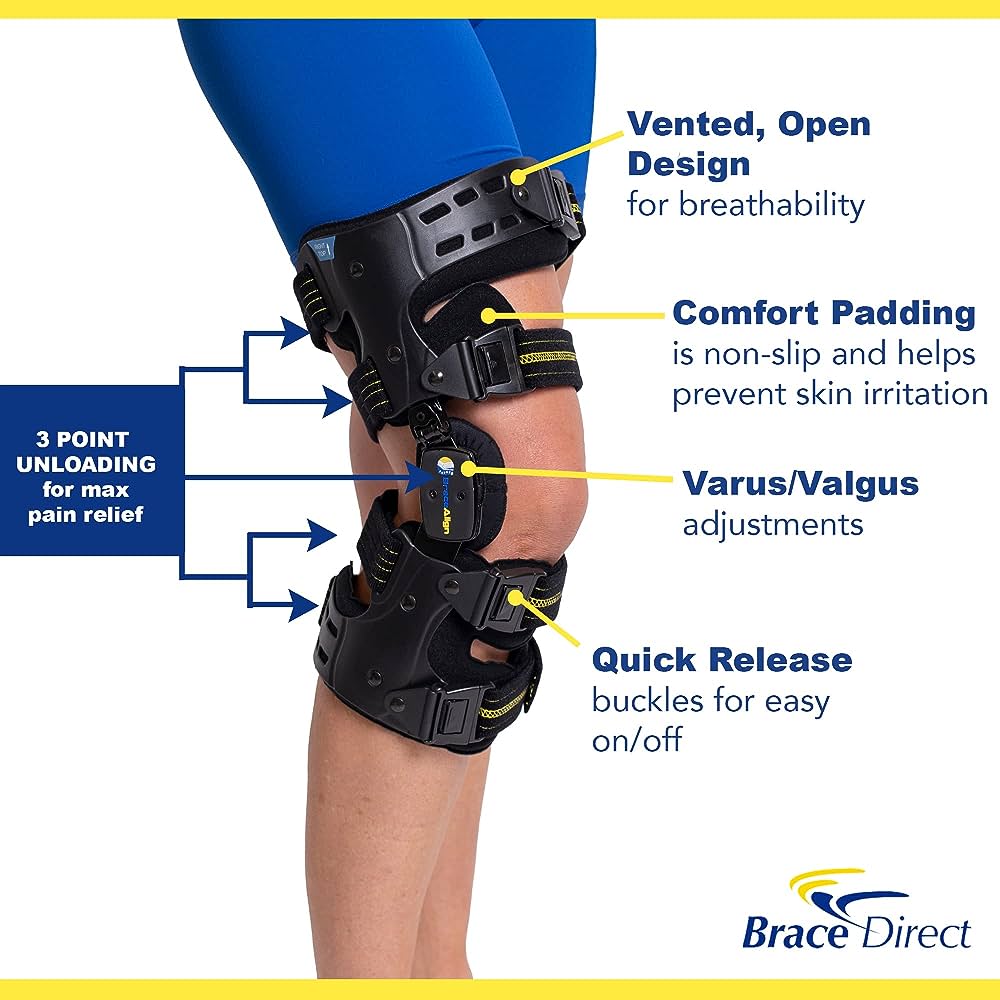
Athletes and Knee Braces
For athletes, wearing knee braces can be an integral part of their training and performance. Here’s why knee braces are important for athletes:
Importance for Athletes
Knee braces offer an added layer of protection and stability to athletes involved in high-impact sports. They can help protect the knee joints from potential injuries, such as ligament tears or dislocations. By providing increased support and stability, knee braces can enhance an athlete’s confidence and performance on the field or court.
Sports-Specific Knee Bracing
Different sports involve varying degrees of stress on the knees. Therefore, sports-specific knee bracing is crucial to provide the necessary support and protection. For example, athletes participating in football or soccer may require hinged knee braces to protect against sudden lateral movements, while basketball players may benefit from braces that provide optimal stabilization during jumping and landing.
Effect on Performance
When utilized appropriately, knee braces do not negatively impact an athlete’s performance. In fact, they can enhance performance by reducing the risk of injuries and providing the necessary support for optimal muscle function. Athletes should work closely with their coaches, trainers, and healthcare professionals to determine the most suitable knee brace for their specific sport and performance needs.
Conclusion
Knee braces can play a crucial role in improving the quality of life for individuals suffering from knee conditions, injuries, or recovering from surgeries. They provide support, stability, and pain relief, allowing individuals to engage in daily activities and sports with confidence. It is important to consult with a healthcare professional to ensure the proper fit and usage of knee braces. Additionally, using knee braces responsibly, in combination with exercises and physical therapy, can help individuals regain knee function and maintain overall knee health. Consider the different types of knee braces available, their purpose, and potential side effects when making a decision. A pain-free life is possible with the right knee brace!
